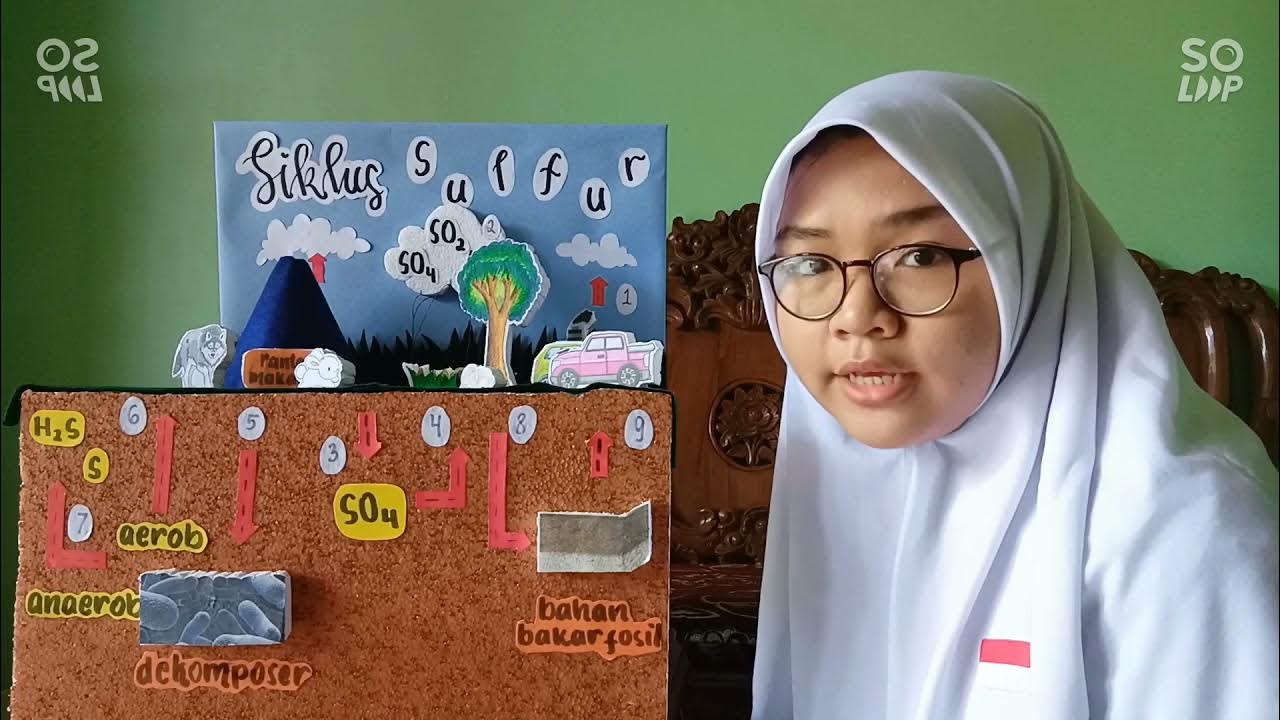Pencemaran Udara : Pencemaran Lingkungan Part - 3
Summary
TLDRThis video provides an in-depth explanation of air pollution, covering five major types of gases: H2S, CO, CO2, SO2, and CFC. The presenter discusses the characteristics, origins, and impacts of each gas. For example, H2S is found in waste gases and has a distinct rotten egg smell, while CO is a colorless, odorless gas produced by incomplete combustion. CO2, often linked to global warming, results from respiration and industrial processes. SO2 and NO2 contribute to acid rain, causing damage to both the environment and human health. CFCs are associated with ozone depletion. The video emphasizes the importance of understanding the harmful effects of these pollutants.
Takeaways
- 😀 H2S (Hydrogen Sulfide) has a foul odor similar to rotten eggs and is highly flammable. It is often found in sewage gas and wetlands.
- 😀 Hydrogen Sulfide is produced from raw materials like crude oil, natural gas, and decomposing organic matter in the digestive system of animals.
- 😀 The major health impact of H2S is that it interferes with cellular respiration, potentially leading to death if inhaled in high concentrations.
- 😀 CO (Carbon Monoxide) is a colorless, odorless, and tasteless gas that results from incomplete combustion, commonly produced by vehicles, heating equipment, and wood stoves.
- 😀 Carbon Monoxide is dangerous as it can lead to hypoxia (oxygen deficiency in the body) and cause symptoms like weakness, hallucinations, and even death.
- 😀 CO2 (Carbon Dioxide) is a colorless and odorless gas produced by respiration in living organisms and from the combustion of fossil fuels like those in factories and vehicles.
- 😀 The primary environmental concern with CO2 is its role in the greenhouse effect, contributing to global warming and climate change.
- 😀 SO2 (Sulfur Dioxide) and NO2 (Nitrogen Dioxide) are colorless, odorless gases often produced by volcanic eruptions, industrial processes, and vehicle emissions.
- 😀 SO2 and NO2 contribute to acid rain, which can cause corrosion, respiratory issues, and environmental damage when it reacts with water vapor in the atmosphere.
- 😀 CFCs (Chlorofluorocarbons) are odorless and highly flammable gases primarily found in refrigerators, air conditioners, and aerosol sprays, leading to ozone layer depletion.
Q & A
What is H2S and where can it be found?
-H2S, or Hydrogen Sulfide, is a gas that smells like rotten eggs. It is commonly found in natural gas, crude oil, swamps, and is also produced in the intestines of animals, leading to its presence in flatulence.
How is Carbon Monoxide (CO) different from Carbon Dioxide (CO2)?
-Carbon Monoxide (CO) is odorless, colorless, and tasteless, making it hard to detect, while Carbon Dioxide (CO2) is also colorless and odorless but is commonly associated with the greenhouse effect and global warming. CO is more toxic and can cause hypoxia (oxygen deficiency), whereas CO2 is a natural byproduct of respiration and combustion.
What are the main sources of Carbon Monoxide (CO)?
-CO is primarily emitted from motor vehicles, heating devices, wood stoves, and cigarette smoke, due to incomplete combustion.
Why is CO considered dangerous to human health?
-CO can cause hypoxia, a condition where the body lacks sufficient oxygen, leading to weakness, hallucinations, and even death in severe cases.
What environmental issue is caused by Carbon Dioxide (CO2)?
-CO2 contributes to the greenhouse effect, which leads to global warming, causing long-term environmental changes such as rising temperatures and melting ice caps.
What is the significance of the phrase 'acid rain' in relation to SO2 and NO2?
-SO2 (Sulfur Dioxide) and NO2 (Nitrogen Dioxide) are gases that can react with water vapor in the atmosphere, forming strong acids. These acids then fall as acid rain, which can damage ecosystems, buildings, and human health.
How do Sulfur Dioxide (SO2) and Nitrogen Dioxide (NO2) affect the environment?
-Both SO2 and NO2 contribute to the formation of acid rain, which can corrode buildings, harm plants, and cause respiratory issues in humans.
What role do volcanic eruptions and industrial processes play in air pollution?
-Volcanic eruptions and industrial processes release large amounts of gases like SO2 and NO2 into the atmosphere, contributing to air pollution and the formation of acid rain.
What is the primary environmental impact of CFCs?
-CFCs (Chlorofluorocarbons) cause the depletion of the ozone layer, which protects the Earth from harmful ultraviolet (UV) radiation. This depletion leads to increased UV exposure, which can cause skin cancer and other health problems.
How do CFCs contribute to ozone layer depletion?
-CFCs, when released into the atmosphere, react with ozone (O3), breaking it down into oxygen molecules. This reduces the amount of ozone, which in turn weakens the Earth's protection from harmful UV radiation.
Outlines

Dieser Bereich ist nur für Premium-Benutzer verfügbar. Bitte führen Sie ein Upgrade durch, um auf diesen Abschnitt zuzugreifen.
Upgrade durchführenMindmap

Dieser Bereich ist nur für Premium-Benutzer verfügbar. Bitte führen Sie ein Upgrade durch, um auf diesen Abschnitt zuzugreifen.
Upgrade durchführenKeywords

Dieser Bereich ist nur für Premium-Benutzer verfügbar. Bitte führen Sie ein Upgrade durch, um auf diesen Abschnitt zuzugreifen.
Upgrade durchführenHighlights

Dieser Bereich ist nur für Premium-Benutzer verfügbar. Bitte führen Sie ein Upgrade durch, um auf diesen Abschnitt zuzugreifen.
Upgrade durchführenTranscripts

Dieser Bereich ist nur für Premium-Benutzer verfügbar. Bitte führen Sie ein Upgrade durch, um auf diesen Abschnitt zuzugreifen.
Upgrade durchführenWeitere ähnliche Videos ansehen

Bond Polarity Q & A - AS Chemistry - Dr Hanaa Assil

Air Pollution Control by Wet Scrubbing

Part 4, Pabrik Asam sulfat: Proses Produksi dari bahan baku Spent Acid-limbah Kilang minyak.

Respiration in Birds | Vet Bytes | Avian Anatomy & Physiology

DAUR BIOGEOKIMIA SULFUR

Dampak Pembakaran Minyak Bumi dan Upaya Mengatasinya, Mapel Kimia Kelas 11 Minggu Ke-4, SMA BIMa
5.0 / 5 (0 votes)
